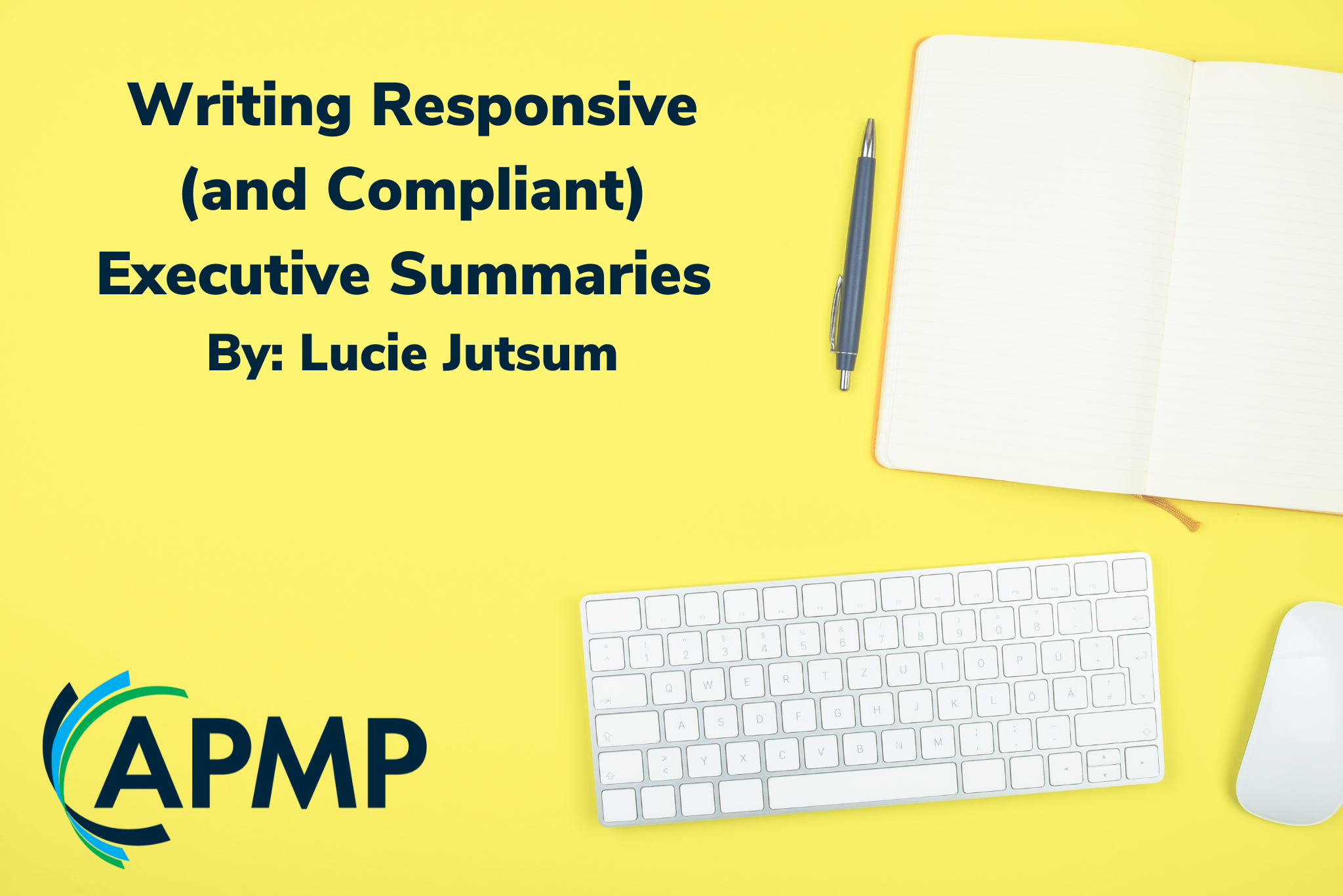When I was a novice proposal writer, I used to think that an executive summary should be an overview of the rest of the proposal. Having been an English Major in college, I thought about proposals like essays, with the Executive Summary taking the role of opening paragraph where the writer should layout the rest of the document and the essay’s thesis. While Executive Summaries can be used to introduce the reader to your proposal, they need to do so much more.
In this article, I will show how the Executive Summary can be used to position the solution within the context of the RFP and the customer’s broader initiatives. In an effective Executive Summary, the reader will be guided through the issues at hand, i.e. the customer’s pain, and the proposed solution, as well as what differentiates the seller’s company from the competition.
The Audience
Whenever you begin writing a strategic sales piece, it’s important to know who the reader is. Identification of the reader will help you make critical decisions about the tone of the writing, how much text to include, and product positioning. The audience for the Executive Summary is the key decision maker for the RFP who usually occupies an executive-level role. Even though we as writers take a lot of pride in our work, we must write knowing that our reader will have little investment or interest in the details of our work. An Executive Summary should be built for quick consumption and readability.
The Structure
The structure of your Executive Summary is important to keep your audience engaged. I like to think of Executive Summaries in a modular way: generally speaking, the summary should include an overview of the current situation, followed by a few detailed differentiators of the solution, and then conclude. This structure guides the reader through the various elements of the deal without laboring over any one point for too long.
Keep it short, no more than 2-4 pages, and be creative with how you organize the content (so long as the RFP hasn’t told you exactly what to do).
Center the Customer
The first word in the first sentence of the first paragraph should be the customer’s name. Leading with the customer will demonstrate that you have listened to their needs and are presenting a customized, tailor-fit solution for them (even if some of your text is repurposed or pre-built content).
Centering their struggles is just as important. Like in interpersonal relationships, showing that you’re a good listener and not just a good talker will build your credibility.
Identify Their Problem
Before I write an executive summary, I always make sure I not only understand the nuances of the product I’m selling, but also the audience I’m selling to. Will they appreciate a specific reference to their use cases? Yes. Will they expect us to demonstrate an understanding of their current environment, challenges, and industry? Yes!
Context matters, especially if you’re a reviewer who is not in the weeds on a regular basis. That said, it’s better not to linger too long in the weeds. Keep it high-level enough so that you don’t belabor the point.
Now Show Off Your Stuff
Now that you’ve anchored the customer and demonstrated that you understand their pain, it’s time to show how your unique solution will drive the best results. Positioning and sales strategy are key here. You can introduce them to your product, but you should also leverage their current situation to position why your product will achieve the results they want. By connecting their pain to a direct value, you can create a clear, compelling through-line that executives and SMEs alike will appreciate.
Ghost the competition by playing up the strengths that you know are your competitor’s weaknesses. Try to gather competitive intelligence and make these subtle digs to strengthen your argument.
Prove It
It’s one thing to say that you can do it all—it’s another to provide metrics and examples of past work that bolster those statements. One compelling way to provide evidence is to add large quotes from existing successful customers. The first thing I do when evaluating a purchase is look at reviews, so think of this as your chance to provide positive, five-star reviews of your product.
Another approach is to include statistics. Metrics and statistics should be meaningful and impactful, so once again, center the customer when choosing statistics to include. Including statistics that are vague or irrelevant will whiff right by when the customer goes to read the proposal. But highlighting value, whether it’s potential for the customer or examples from past customers, will provide an eye-catching statistic that will generate conversation and interest.
Images
Add images if they are compelling and/or factual. Don’t add them if they’re boring, irrelevant, or fluff. Infographics are great if they’re legible. The more you can customize your images, the better.
Bring it Home
A strong conclusion repeats what the first paragraph said, then adds some summary information about the solution you’re proposing. It can also be a last chance to highlight a metric or quote from a successful customer.
Get to the Point and Make it Worth It
Whenever I’m struggling to write parts of the Executive Summary, I return to my audience. I imagine myself in the shoes of the evaluator. As the reviewer, I need to be wowed. Maybe it’s the end of the day when I finally get to this last proposal. At this point I’ve looked at several other proposals for this same RFP, and frankly, I’m bored. That’s when I get the Executive Summary described in this article: it’s punchy and gets to the point. It’s not laden with buzzwords and fluffy statistics. It tells me what I need to know, and the writer sounds like they know what they’re talking about.
Author Bio



Join the Conversation